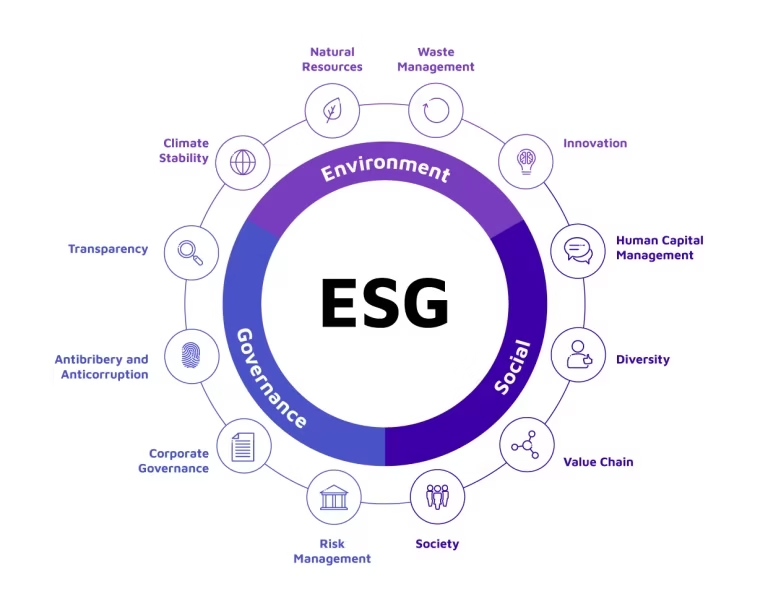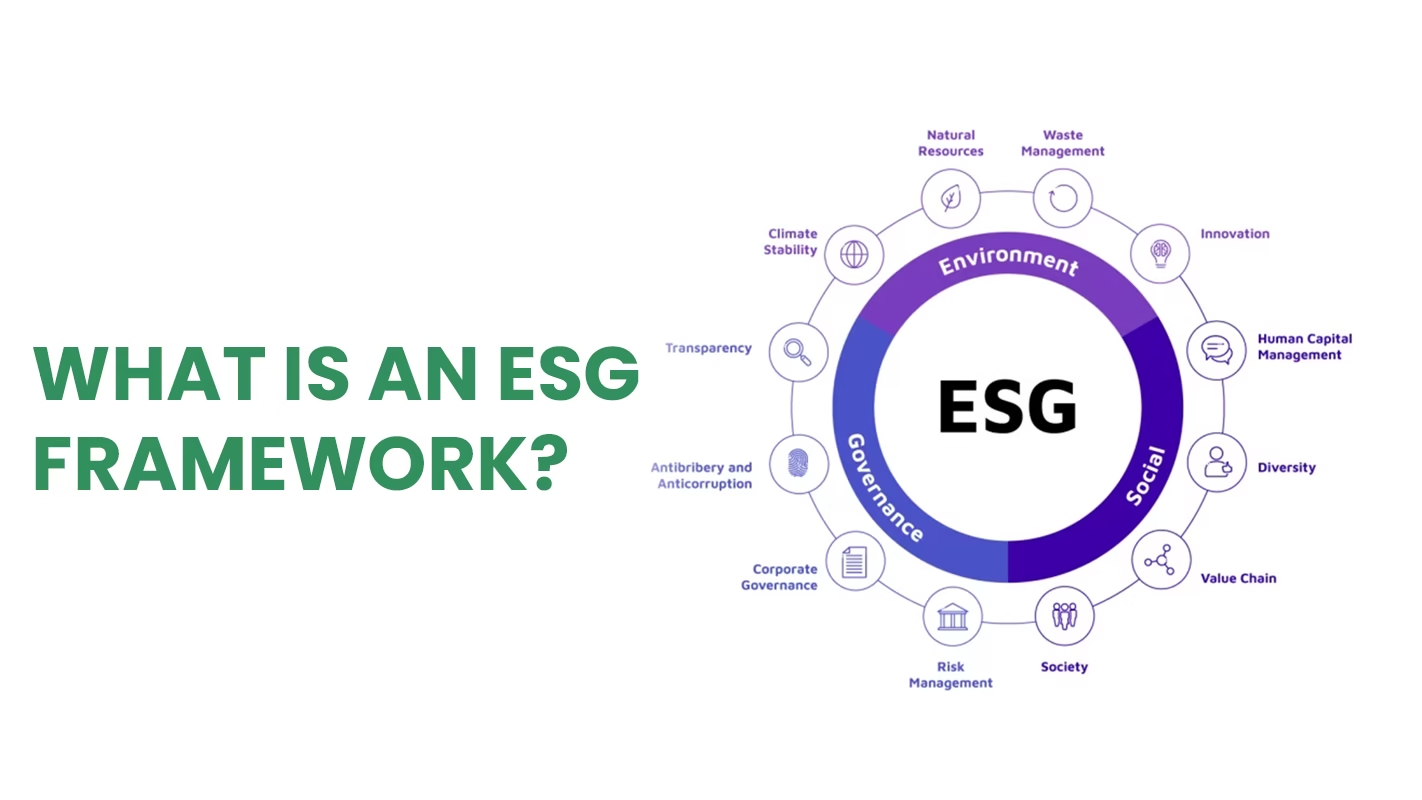An ESG framework provides organizations with a structured approach to embed Environmental, Social, and Governance considerations into their strategy, operations, and reporting. This article explains what ESG frameworks are, why they matter, how to choose the right one, and best practices for implementation. We benchmark leading frameworks—GRI, SASB, TCFD, CDP, and IFRS/ISSB—and offer actionable guidance for integrating ESG frameworks into corporate governance. Along the way, we highlight how AI and digital tools can streamline ESG data collection and reporting. By the end, you will understand how a robust ESG framework drives long-term value, reduces risk, and attracts investors.
What Is an ESG Framework?
An ESG framework is a set of guidelines, metrics, and reporting standards that help organizations measure, manage, and communicate their performance on environmental, social, and governance issues. Rather than a single “one-size-fits-all” template, there are multiple frameworks designed for different industries, geographies, and stakeholder needs.
- Environmental (E) covers emissions, resource consumption, and ecosystem impacts.
- Social (S) encompasses labor practices, diversity, community relations, and human rights.
- Governance (G) addresses board structure, ethics, risk management, and compliance.

A well-chosen ESG framework ensures your disclosures are credible, comparable, and aligned with stakeholder expectations.
Why ESG Frameworks Matter
Building Credibility and TrustTransparent ESG reporting strengthens stakeholder trust. Companies that use recognized frameworks demonstrate accountability to investors, regulators, and the public.
Driving Better Decision-Making
ESG frameworks guide materiality assessments—identifying the issues most relevant to your business and stakeholders—thereby focusing resources on areas of highest impact and risk management.
Unlocking Access to Capital
Investors increasingly integrate ESG criteria into their decisions. Adopting a formal ESG framework can improve credit ratings, lower cost of capital, and attract sustainability-focused funds.
Ensuring Regulatory Compliance
Regulatory regimes such as the EU’s Corporate Sustainability Reporting Directive (CSRD) and upcoming standards from the ISSB require robust ESG disclosures. Framework alignment helps meet these evolving obligations
Leading ESG Frameworks and Standards
- Global Reporting Initiative (GRI)
GRI is the most widely used framework for sustainability reporting. It offers comprehensive standards for environmental, social, and economic disclosures, enabling comparability across organizations and sectors. - Sustainability Accounting Standards Board (SASB)
SASB provides industry-specific standards focused on financially material ESG factors. Its metrics help investors evaluate how sustainability issues impact financial performance. - Task Force on Climate-Related Financial Disclosures (TCFD)
TCFD recommends governance, strategy, risk management, and metric disclosures for climate-related risks and opportunities. It’s becoming mandatory in many jurisdictions and strongly supported by investor. - CDP (formerly Carbon Disclosure Project)
CDP runs global disclosure systems for environmental impacts—primarily climate, water, and forests. Its scoring methodology is used by thousands of companies to benchmark performance and identify improvement areas - IFRS S2 (ISSB)
The International Sustainability Standards Board (ISSB) under IFRS is developing comprehensive global sustainability disclosure standards. IFRS S2 focuses on climate-related risks and integrates financial and sustainability reporting under one roof.
How to Choose the Right ESG Framework
Selecting an ESG framework involves matching business objectives with stakeholder needs and industry norms. Follow these steps:
Assemble an ESG Team
Build a cross-functional team spanning finance, operations, compliance, and communications to oversee framework selection and implementation.
Conduct a Materiality Assessment
Identify the ESG issues most relevant to your company and stakeholders. Prioritize frameworks that address these material factors comprehensively
Evaluate Framework Features
Compare scope (environmental vs. social vs. governance), industry specificity (e.g., SASB for financials, GRI for broad disclosures), and alignment with regulatory requirements (e.g., TCFD, ISSB).
Pilot and Integrate
Run a pilot using draft disclosures. Ensure data systems can support the chosen framework’s metrics. Leverage digital tools to automate data collection and reporting.
Train and Engage
Educate leadership, staff, and supply chain partners on ESG framework requirements and reporting procedures to ensure organization-wide buy-in and data quality.
Best Practices for Implementing an ESG Framework
Assemble a Dedicated ESG Task Force
Have clear roles—data collection, analysis, disclosure, and external engagement. This “ESG dream team” ensures accountability and expertise across functions
Leverage Technology for Data Management
Use digital platforms and AI-powered analytics to centralize ESG data, perform real-time monitoring, and generate insights for continuous improvement
Set Clear, Science-Based Targets
Adopt targets aligned with global goals (e.g., SBTi for emissions, UN SDGs for social impacts). Use frameworks like TCFD to disclose progress against climate-related targets
Integrate ESG into Corporate Strategy
Embed ESG metrics in executive KPIs, board oversight, and investment decisions. This integration ensures sustainability is a core business driver, not an afterthought.
Ensure Transparent, Regular Reporting
Publish ESG reports annually using chosen frameworks. Include third-party assurance where possible to validate data integrity and enhance credibility
The Role of AI and Digitalisation in ESG Frameworks
AI and digital tools are revolutionizing ESG framework implementation:
Predictive Analytics to forecast climate risks and resource scarcity.
IoT Sensors for real-time environmental monitoring (energy use, emissions).
Natural Language Processing for automated screening of policies, news, and regulatory developments.
These technologies reduce manual effort, improve data accuracy, and enable proactive risk management, aligning with best practices in digital ESG reporting.
Overcoming Common Challenges
Data Gaps: Start with proxy data and gradually improve measurement.
Resource Constraints: Leverage regional ESG service providers for cost-effective support.
Regulatory Complexity: Focus on frameworks mandated or recommended in key markets, then expand.
Greenwashing Risks: Ensure robust data governance and third-party verification to maintain trust.
Future Trends in ESG Frameworks
Unified Global Standards under ISSB driving convergence of reporting frameworks.
Increased ESG Regulation mandating disclosures across major markets.
Greater Stakeholder Engagement through digital platforms and real-time ESG ratings.
Expansion of Social Metrics (health, equity, community impact) in mainstream reporting.
Staying ahead of these trends ensures your ESG framework remains relevant and forward-looking.
A robust ESG framework is indispensable for modern organizations. It guides sustainable decision-making, enhances transparency, and unlocks value. By choosing the right framework—GRI, SASB, TCFD, CDP, or IFRS S2—and following best practices, you can transform ESG from a reporting exercise into a strategic advantage.
Embrace technology, set ambitious targets, and foster a culture of accountability. Whether you’re a large corporation or an emerging enterprise, embedding an ESG framework positions you to thrive in an era where sustainability is synonymous with success.
